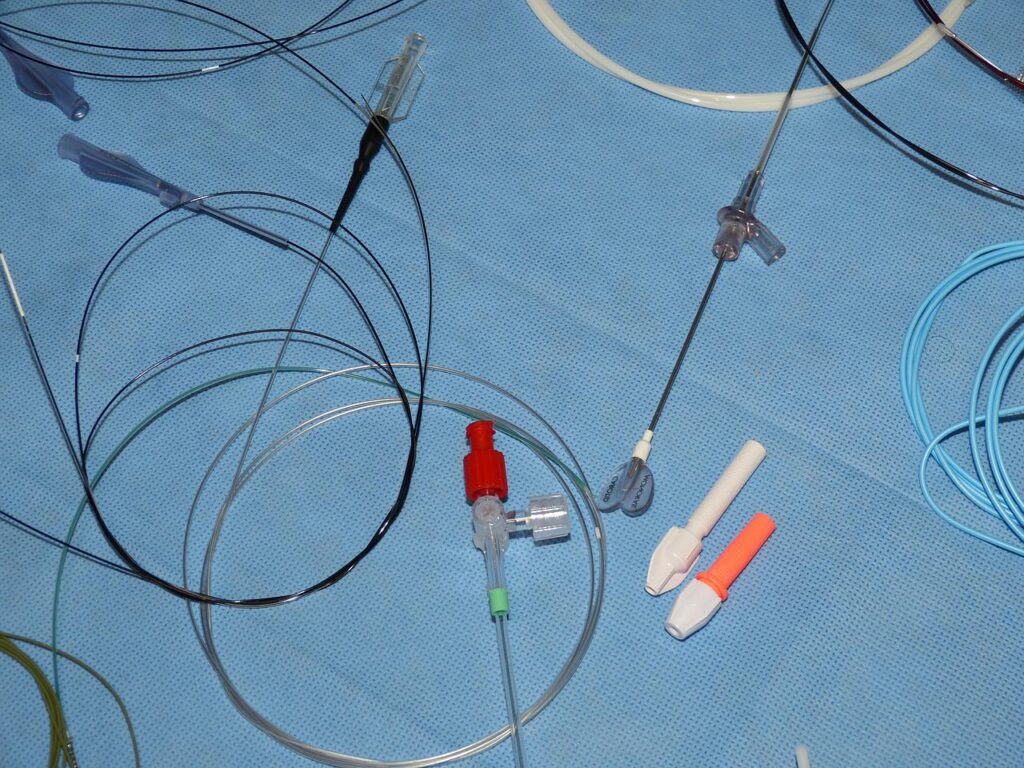The demand for catheters in the U.S is growing. Catheters market size, which exceeded US $18.5 billion in 2020, is projected to grow at over 9.5% CAGR from 2021 to 2027. This growth is intensifying pressure on catheter manufacturers to boost output.
But meeting this increased demand is challenging. There’s no room for error when producing catheters. They must be precise and safe. Industrial ovens are a critical part of producing catheters. Previously, manufacturers couldn’t find industrial ovens that met the thermal processing applications in catheter manufacturing. That was especially true when producing the catheter system’s long plastic tubes. That’s changed.
Today, catheter manufacturers have more innovative oven options to choose from when producing high-quality catheters than ever, including Despatch’s PC2-63 Catheter Annealing and Curing Oven. Designed specifically for the unique needs of catheter manufacturing, this oven embodies the company’s extensive experience in catheter manufacturing. Plus, it offers a combination of advanced features and options not available in competitive models.
Processing Applications for Catheter Manufacturing
Catheters come in a wide variety of materials—red rubber latex, plastic, vinyl or PVC, silicone, latex-free, and so on. Catheters also come in a variety of tube diameters, known as their French size, and lengths. Plus, the have two kinds of insertion tips—straight tips and coudé tips. The choice of materials, French size, and insertion tips often depends on medical requirements and users’ preferences.
Another consideration is length. Catheters range in size anywhere from 3 in to over 6 ft (7.5 cm to 2 m long). While long catheters are becoming increasingly more common, shorter catheters are still in demand. Both require industrial ovens to fit their requirements. Batch and conveyor ovens, for example, are often more suitable for shorter catheters. If a catheter has a distal tip that needs thermal processing, an industrial oven featuring a slotted door is ideal.
Catheter Manufacturing Applications and Considerations
Catheter manufacturers use industrial ovens for a variety of thermal processing applications, including (1) curing and drying of coatings and linings that guard against urinary tract infections and (2) increased lubricity to ease insertion’s discomfort. Additional applications include adhesive bonding of a catheter’s ports and attachments and for annealing to boost flexibility and hardness for specific applications.
Below we review some thermal processing challenges catheter manufacturers must beat to produce these medical devices and some best practices when selecting an oven:
- Manufacturers often need a clean process oven with Class 100 HEPA filters to meet regulations for producing some catheters. Or, they may need a Class A oven to safely handle flammable solvents or large amounts of moisture removal. Look for ovens with pressure relief panes, purge timers, and exhaust fans to do the job. Stainless steel oven interior makes for easy cleaning.
- Long catheters present critical thermal processing challenges. Using airflow perpendicular to the catheters can result in defects, including bubbles and surface blemishes where parts have touched due to airflow impingement and movement. An oven tall enough to accommodate long catheters in a vertical orientation is recommended. Hanging catheters with vertical airflow prevents airflow impingement.
- Braided catheters require a reflow oven to fuse the lubricious inner liner, braided reinforcement, and polymer outer jacket. Removable heat shrinkable sleeves help apply compression while the outer jacket reflows through the braid and fuses to the inner liner. Braided catheters add strength and torsion resistance needed for steerable medical devices.
- Catheters often have antimicrobial coating applied to minimize the risk of spreading infections. After coating is complete, which usually takes only a few minutes, the catheters must go through a dry time, followed by a thermal cure. The catheter’s material is bio-absorbable in nature and involves a solvent, so the oven needs to be rated for flammable solvents.
- A balloon catheter is required to be high pressure resistant, resistant to fatigue, and have thin walls for free movement. Annealing can increase the tensile strength of the material allowing the balloons to be used with small wall thickness and makes it pressure resistant. Annealing also helps relieve internal pressure or stresses that could jeopardize performance.
- The metals used in catheters go through a process called shape setting. This process imparts a specified shape into the metal through fixturing and heat treating. Nitinol, a Nickel-Titanium alloy, is shaped by wrapping the wire around a mandrel or fixture and heat treating it at a controlled temperature for a specified time to impart the desired shape.
Custom Engineered versus Standard Oven
Buying a standard industrial oven for manufacturing catheters offers numerous benefits—including good performance, uniformity at a lower cost, and shorter lead and delivery times than custom-engineered ovens. If time and cost are factors, this is the strategy to adopt. Savvy customers often purchase a larger size custom oven to allow for growth. Put simply, standard ovens have a shorter lead time and reduced cost and come with many features to fit standard applications.
But catheter manufacturers may need custom-engineered industrial oven models. Look for an oven manufacturer that will work closely with you to generate an oven to meet the unique application, process, size, and configuration you need. If buying a custom-engineered industrial oven extensive experience in and thoroughly understands the process challenges inherent in catheter manufacturing.
Buying standard industrial ovens is generally more cost-effective and faster than buying custom-engineered ones. You can always modify a standard oven to fit your needs. But sometimes you really need a custom-engineered unit. That provides several new issues you’ll need to deal with that you won’t need to deal with if you buy standard. The key as always is buying an industrial oven that fits your needs.
Despatch offers a wide variety of industrial ovens in the medical industry. Contact the company for help with selecting a configuration that meets your specific needs.






